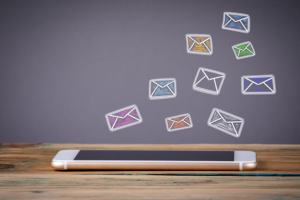How To Segment Your Email Marketing Campaigns



No one signed up because they wanted to be a lead in your marketing database. This may be hard to accept at first. After all, if someone handed over their email address they obviously knew they would eventually be contacted by the company, right? They must have understood they would start getting
No one signed up because they wanted to be a lead in your marketing database.
This may be hard to accept at first. After all, if someone handed over their email address they obviously knew they would eventually be contacted by the company, right?
They must have understood they would start getting the company’s newsletter, special promotional offers or invitations to webinars and other virtual events.
They had to know they would, inevitably, become part of one or more marketing campaigns.
In fact, people give their email for all kinds of reasons.
Sometimes it’s because they want to download a gated asset like an e-book or white paper.
Sometimes it’s because the product they wanted was out of stock and they wanted to be notified when it’s back in stock.
Yes, in some cases they want regular content from you, but they probably don’t see themselves as leads or a campaign target.
They saw themselves as starting a relationship with you —a one-on-one relationship. Not a relationship where they would just be treated as one lead among many.
This is important for marketers to remember because, while your email list is one of your most valuable assets, it needs to be used with care and consideration for every recipient.
As part of delivering an outstanding customer experience, email represents one of the ideal channels to personalize a marketing campaign so that the recipient doesn’t feel like they’re seeing a campaign at all. They’re only seeing messages that are relevant to them, that reflect the company recognizes them and wants to offer value.
This is why segmentation is such a powerful strategy. Assuming you’ve collected more than simply an email address, you can use the data with tools like Marketing Cloud to create a more targeted, timely and ultimately more thoughtful approach.
You don’t have to wait to have a giant email database to begin segmenting, either. In fact, the earlier you start the more you’ll be able to test and improve the kinds of email campaigns you create for your business.
The most obvious email segments include demographic information, role or industry, size of company or location. There are many other options, though, and these ones should never be overlooked:
1. Replace mystery with choices
Don’t have a generic “Sign up to receive updates!” banner on your site or landing page. It’s unclear what those ‘updates’ will be, and the number of email addresses you gather may be limited as a result.
The same goes for discreetly sliding in a checked box near the end of an e-commerce shopping cart transaction that opts in a customer to your database. They didn’t necessarily ask for that, and they may not know what will be landing in their inbox.
Instead, try to ensure from the outset that you let your customers self-segment by giving them choices about the kinds of messaging they want to receive. This can be based on content you produce, a set of interests they confirm or other criteria.
You can do this as part of an online email preference centre, or even in surveys if you’re trying to segment your list once it’s already been built.
2. Let history guide the future
Data on an email recipient’s past purchases, service interactions or engagement on your site will be one of the best bellwethers of what they’re likely to open and read.
When you use that data to create segments, however, you wind up with very different marketing campaign opportunities.
Segmenting based on purchase histories, for instance, will be a good place to run campaigns about complementary products or upselling opportunities of some kind.
A segment based on service interactions may be a good audience to target with informational or educational content that helps them get more out of their purchases, build their trust with your company and retain their loyalty.
Engagement data — those who read your email newsletter, for instance, or attend your webinars — are better to segment as earlier-stage prospects with whom you want to deepen the relationship. Use this for campaigns that help identify purchase intent or nurture the positive impression or interest you’ve already created.
3. Turn fans into VIPs
No matter what kind of marketing campaigns you run, ongoing analysis should be a standard operating procedure. In other words, you should be using data about how every email blast performed and tailor the next one accordingly.
Some firms will do this by creating sub-segments marked “actives” and “inactives” based on open rates and click-throughs. This is a start, but drill deeper into your most active segment. What types of content were the most popular among your active sub-segment?
Look for any patterns or commonalities among this group. Aim to build upon what you learn to take those ‘fans’ within your email database and carve out what will become a VIP list.
Remember that it’s often a small segment of your audience that will drive the majority of a campaign’s performance. That’s not always a bad thing if their activity translates into growth in your business.
A VIP segment could be the start of an account-based marketing (ABM) campaign, where you cross-check that list with your sales team to create the most personalized and outcome-based campaign possible.
People may complain about all the email they have to wade through every day, but that means you have an opportunity to stand out for the quality of what you provide.
In that sense, your audience is always doing a little segmentation, too — and if you keep improving, your company could find itself in the “good” segment.






